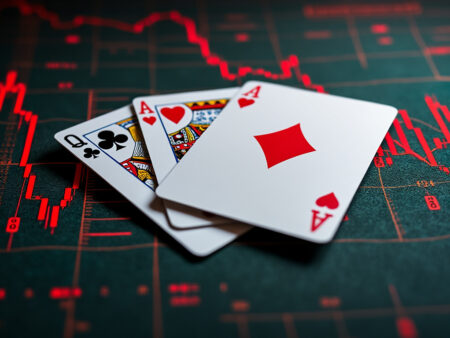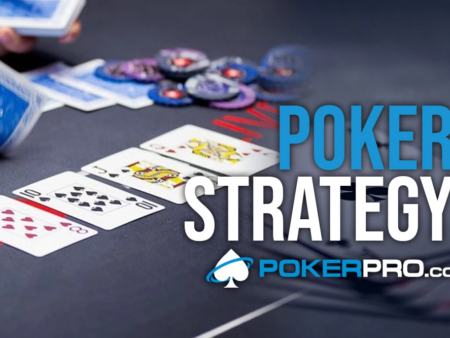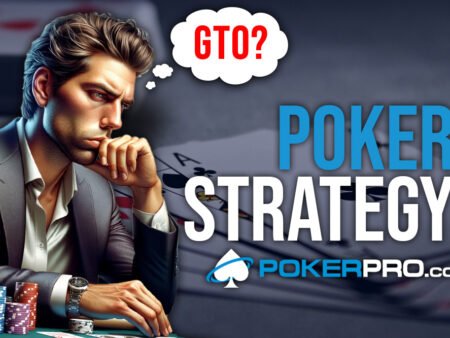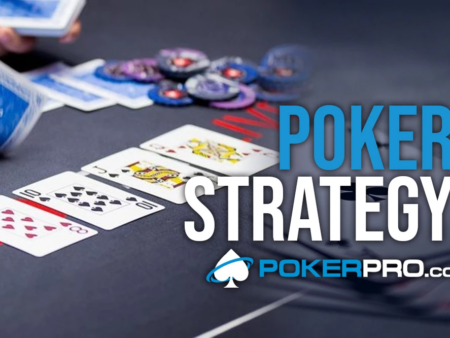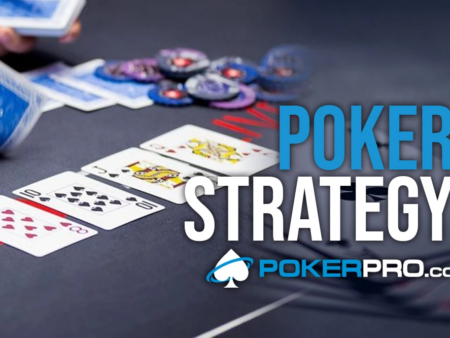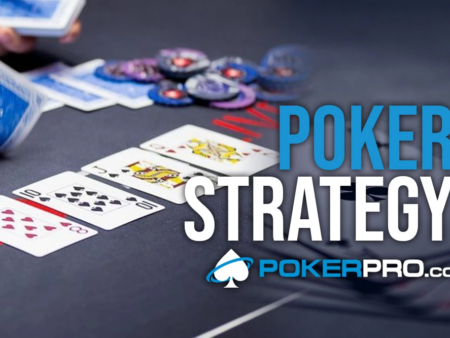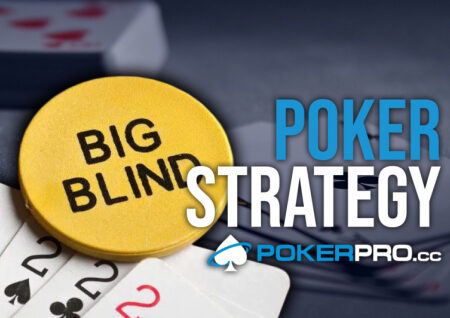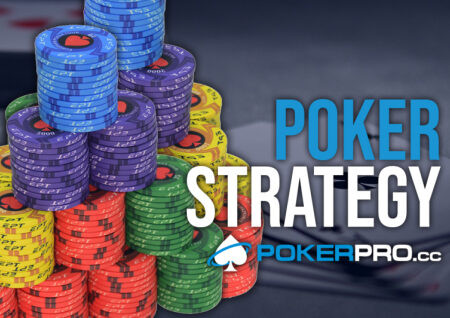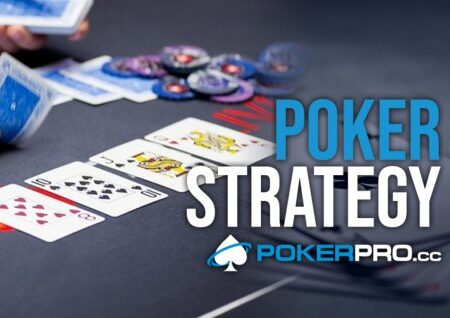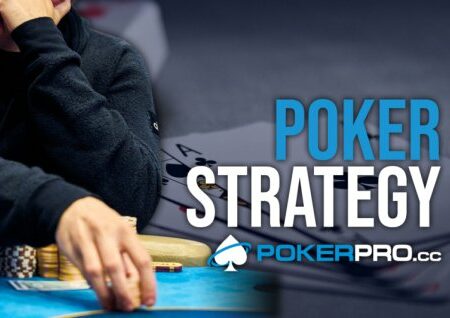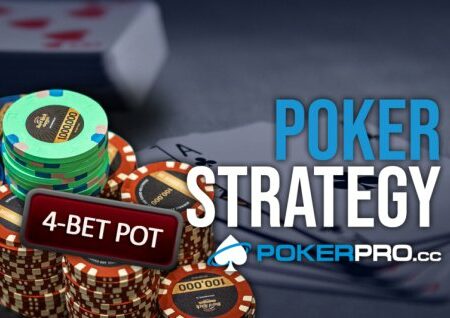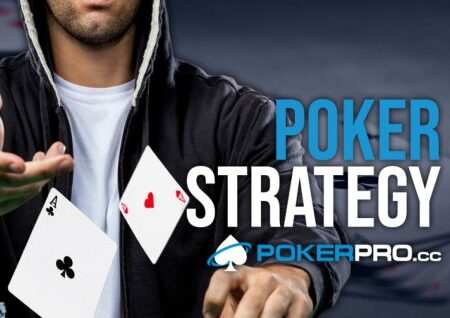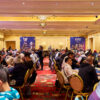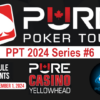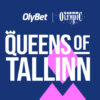Playing blind vs blind is very important for overall win rate, since it happens very often and is equally problematic to a lot of aspiring and well es…
Big Blind Doesn’t Believe Our Bets
Playing blind vs blind is very important for overall win rate, since it happens very often and is equally problematic to a lot of aspiring and well established poker professionals.
How to play from Small Blind
When one faces open from let’s say early position and is in small blind, he knows that he should be very tight and almost always 3-betting, so he has initiative postflop and strong range.
But as we come closer to the blinds it becomes more difficult: when we are in sb and it’s folded to us we have to have a wide range in order to keep the initial losses of 50bb/100 to a minimum. Since that also means that we have better price since we invested half of a blind and that we only have to make -49.99bb/100 in order to play certain hands it makes things complicated.
Naturally big blind knows all of this, plus he has even better price, he is closing the action and the only situation in which bb is in position, so small blinds open is welcomed with a lot of defends (granted BB has to make only less than -100/bb100, so his range is and should be way wider than sb’s).
Players often have a “feeling” that bb is not believing their continuation bets whatsoever, so a lot of times when asked why they didn’t or (or did) bet a certain hand in these spots they can’t explain it.
So let’s make things even more fun and put a QQ2 rainbow flop where bb won’t “believe” ever that we bet with a value hand and where he will float the most of any other post in the game.
For the purpose of this article we will neglect limp as it makes things even more complicated and it’s not even close, and let’s assume a small blind is only raising or folding and doing it with 40% of a range.
Big blind is defending by calling 63% of a hands.
Flop Qh Qc 2s
Let’s see what does the solver say:
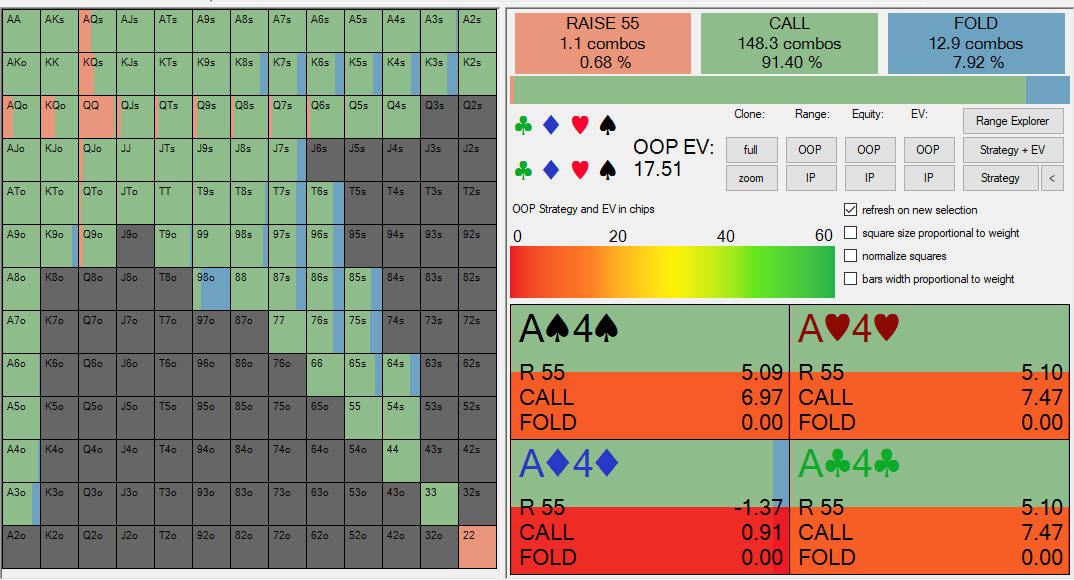
We should bet 65% of our opening range and check 35%. Sounds pretty standard so far?
But wait what do we do with 35% which we check if big blind bets ¼ of a pot?
We call with 93% of those hands and fold only 7% or 2.2% of the original range.
Let’s take a look at composition of our betting range.
We should bet somewhat polarized: clear value hands and all backdoor flush draws certain percent and almost all air that we want to bet our trips and fullhouse always!
This is very common mistake that players of all levels tend to slowplay in these spots.
Let’s just take astep back and think. We assumed that bb is calling our bets very wide since he has advantage in position and can lose up to 100bb’s per 100.
That means that we have to bet our biggest hands always.
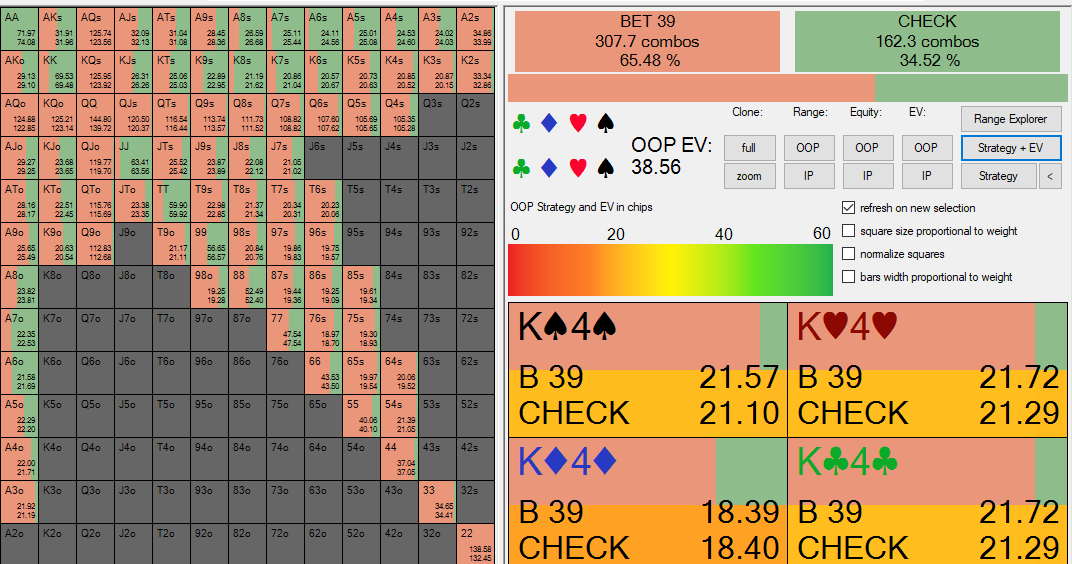
However we do check hands that would be clear value bets if we decide to bet them like: KK, JJ, TT, half of AK etc. But this allows us, amongst other things, to call with almost the entire checking range!
We keep our checking range of higher quality and prepare for BB to bet often as you probably see in practice.
BB should only be betting 32% of his defending range and check back rest. In practice we see much higher numbers of bet vs missed cbet and mostly rightly so because very few players call with almost all of the hands they didn’t bet.
That allows us to call with hands such as 75s with a backdoor flush door only, High type of hands etc.
When we cbet, bb defends either by calling or raising half of the hands he called preflop with. Again in practice we do see higher percent of defends on these types of boards.
It’s not something to be afraid of but rather take advantage of by double barrelling even if we don’t pick up additional equity which is a rule of thumb for most second barrel spots.
This is actually one of those spots where we can find huge equity, where the general population plays extremely exploitable especially on lower stakes.
If we put data from our tracking tools and lock nodes equity that we can gain goes as high as 15 bb/100 per additional 10% bb defends and the only thing that we have to do is to get him off his floats which beats us by betting with hands that don’t have showdown value.
We might go deeper with locked tendencies in some of the next articles if you readers express desire to see how exactly to exploit certain tendencies.
To summarize
Always bet trips and fullhouses for value
Don’t be afraid to bet with all of your air.
Leave some decent hands to call BB’s bet with.
If you pick up a tendency from bb to overcall just keep betting future streets.
Don’t be results oriented if you fall into Q2 of bb :).
